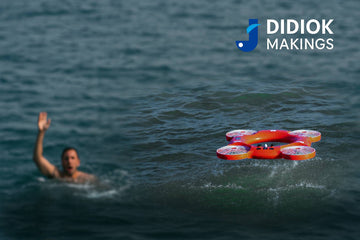Not long ago, when someone fell into a river or got stranded in a flood, the only things rescuers had at hand were ropes, poles, and lifebuoys. Brave rescuers would wade into dangerous waters, risking their own lives to pull someone out. Today, thanks to smarter technology, we’re entering a new era — one where water rescue is faster, safer, and more efficient than ever before.
Let’s talk about what’s changing, why it matters, and how new tools like water rescue drones are helping save more lives.
The Pain Points in Water Rescue
If you’ve worked in emergency services, firefighting, or disaster response, you already know the common challenges:
-
Time is everything. Drowning can happen in seconds.
-
Conditions are unpredictable. Fast currents, strong winds, and poor visibility slow things down.
-
People panic. Most drowning victims can’t think straight or follow instructions.
-
Rescuers take huge risks. Every water entry adds danger to their lives.
For too long, the gear just hasn’t kept up with the reality on the ground. Lifebuoys are helpful, but they rely on someone being close enough — and strong enough — to throw it accurately. Boats take time to launch. And not every area is safe for divers or swimmers.
So, what’s the answer?
Smart Water Rescue Equipment: The Game Changer
The last few years have brought real innovation into this space. We're seeing smart water rescue equipment take center stage — gear that’s remote-controlled, fast-acting, and built for the unpredictable.
One standout example is the JX-6A Water Rescue Drone — a flying, floating device designed specifically for rescue operations. Unlike traditional tools, this drone doesn’t wait for the rescuer to reach the victim. It flies directly to them, carrying 190N of buoyant force, strong enough to keep an adult above water until help arrives.
Here’s why tools like the JX-6A are turning heads:
-
✅ Rapid response — Flies over land or water in seconds.
-
✅ Remote controlled — Keeps rescue teams out of harm’s way.
-
✅ Highly visible — Bright body and onboard lights help victims spot it fast.
-
✅ Easy to deploy — No complex setup; works right out of the box.
-
✅ Reliable even in bad weather — Built to handle rain, wind, and rough conditions.
For agencies and teams working in coastal towns, flood-prone regions, or with limited manpower, this kind of solution isn’t a luxury — it’s a necessity.
It’s Not Just About the Tech — It’s About Saving Lives
Rescue equipment should never be complicated for the people using it. Whether you're running a fire department, managing a beach patrol, or coordinating a city’s emergency response, your gear needs to do one thing: get the job done, fast and safe.
That’s where the new generation of smart rescue gear excels. It’s not replacing human rescuers — it’s supporting them, allowing them to do more with less, and avoid unnecessary risks.
Who Should Be Looking at These Solutions?
We’ve worked with:
-
🔹 Fire and rescue teams looking for rapid deployment options.
-
🔹 Maritime authorities patrolling busy coastlines.
-
🔹 Flood response units working in cities and rural areas.
-
🔹 Suppliers who want to bring life-saving tech to their clients.
If you’re responsible for public safety, chances are you’ve already asked yourself, “How can we respond faster without putting more people in danger?” That’s exactly the kind of problem this technology is built to solve.
Final Thoughts: The Future Is Here
We’re no longer stuck choosing between a rope or a boat. Smart water rescue equipment gives us new tools — and new hope.
From lifebuoys to drones, this evolution is about more than technology. It’s about putting better options into the hands of the people who need them most — the teams on the front lines.
If you're ready to learn more about the JX-6A Water Rescue Drone or find out how smart rescue tech fits into your operations, our team is here to help. We’ve got the specs, the use cases, and the experience to guide you.
👉 Let’s talk solutions — not just products.





